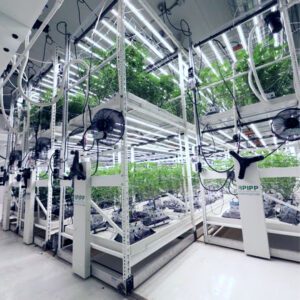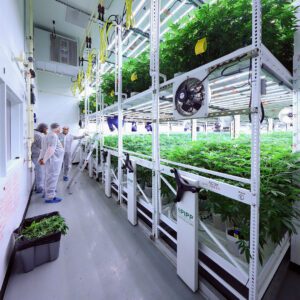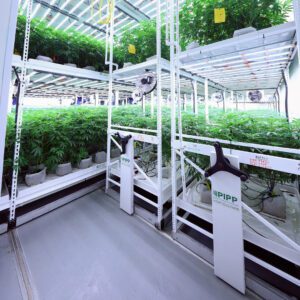5 Best Practices for Your Cannabis Mother Room
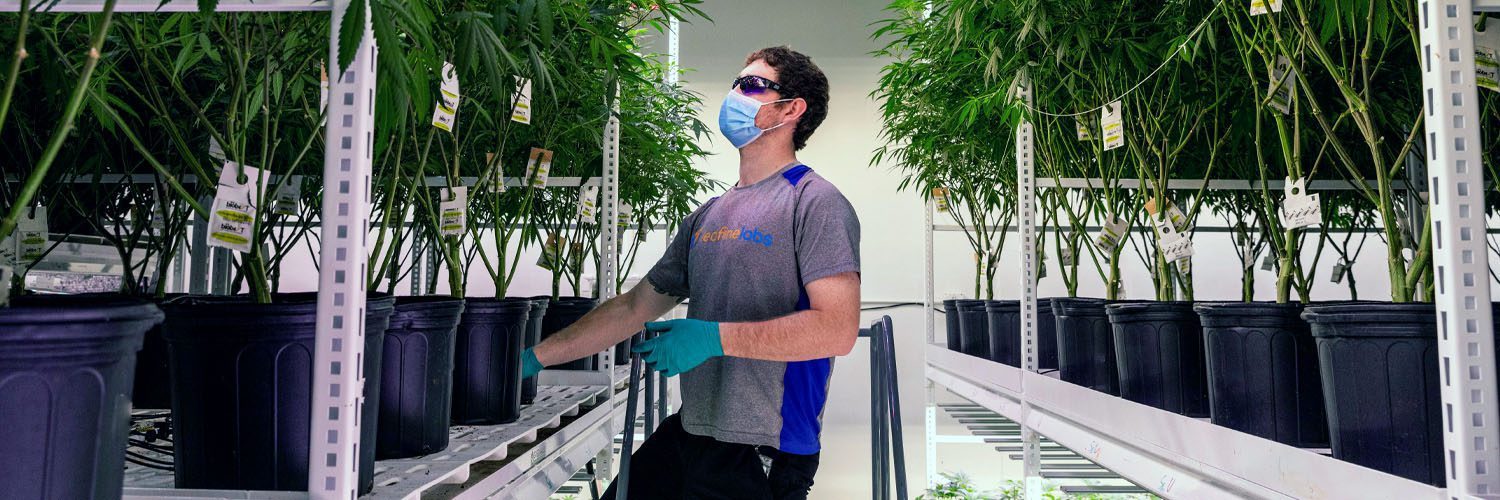
Be Good to Your Mother(s)
Your indoor cannabis cultivation facility is operating within a highly competitive market. While the point of harvest may seem like the most important link in your production process, you may want to revisit the management of your cannabis mother room. That’s where your business houses its real long-term value.
The mother room is where your team nurtures the mother plants, which, of course, shape the future of every plant you’ll grow. These mother plants are carefully selected cannabis plants kept in a vegetative state and not allowed to flower. The primary purpose of maintaining these mother plants is to provide a consistent and reliable source of clones or cuttings. These clones are genetically identical to the mother plant, ensuring uniformity in the traits and quality of the plants grown from them, such as potency, flavor profiles, and growth characteristics.
An efficiently managed mother room ensures a steady flow of high-quality clones to fill the other rooms in your facility.
Your yield and profits begin here.
A successful mother room strategy blends the precision of genetics with the art of cultivation, ultimately developing a shield for your business against the unpredictability of nature. In a market that values both diversity and the reliability of old favorites on the shelf, the ability to sustain and replicate specific cannabis strains with accuracy is invaluable.
So, what goes into a successful cannabis mother room?
A robust mother room operation employs advanced environmental controls, precise nutrient management, and rigorous hygiene protocols to ward off pests and pathogens, ensuring that each clone represents the best possible start for the next generation of plants. We’ll explain five helpful best practices to bear in mind below.
These tips will streamline your team’s cultivation process and cut back on the risk of crop failure. This level of control and efficiency translates into faster turnaround times, higher yield potential, and improved product consistency, ultimately contributing to a stronger market position.
The success of a commercial indoor cannabis cultivation business is intricately linked to the performance of its mother room.
[#1] Double-Stacked Cannabis Mother Room Racks
Let’s get into the actual layout of your cannabis mother room. How are these plants supported? Where are they located within the room?
More often lately, our team has seen cultivators double-stacking mother plants and maintaining them for shorter lifespans (as opposed to running a single-level layout with plants that might be sustained for longer time periods). Some cultivation businesses might prefer to hold onto mother plants for upward of a year or more, but the shorter lifespan encourages more supple cuttings and a more agile cultivation team in general. This also limits the risk of pest and pathogen spread.
In a 2023 webinar, Pipp’s Director of Horticulture, Anders Peterson said that double-stacking has proven benefits.

Maintaining younger mother plants in your cycle balances the diversity of the room and allows for higher quality: We’ve noticed grow teams getting a significant increase in “A-grade” cuttings versus the older mother plants. Double-stacked mother rooms help house additional genetics in a smaller space, allowing you to allocate square footage for flower production.
READ MORE: See how much revenue you could be generating by going vertical!
There’s a balance, of course, in serving the market with tried-and-true genetics that will sell easily and providing dispensaries with more cutting-edge cultivars that might be a bit more experimental or nuanced in their demand curves. A diverse, double-stacked mother room lends some of that flexibility to your business.
PRO TIP: Good ventilation is essential to prevent microclimates within the tiers. Use oscillating fans and ensure your room's HVAC system is capable of circulating air effectively throughout the stacked racks. Proper airflow helps to maintain consistent temperature and humidity levels across all levels, minimizing the risk of mold and pests.
[#2] Optimal Environmental Conditions
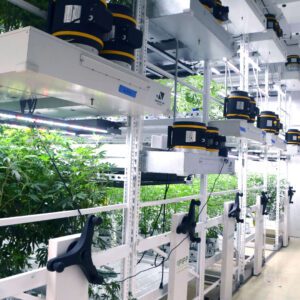
This may go without saying, but it’s worth underscoring the importance of daily touchpoints with your mother plants. In between cuttings, the maintenance of your plants is absolutely critical.
Keep your mother plants in veg by maintaining an 18-hours-on/6-hours-off lighting schedule. Inspect and clean all light fixtures to ensure optimal output–and do whatever you can to prevent light leaking in from the hallway. In fact, implement a rotation schedule for light bulbs to maintain consistent light intensity and spectrum.
That point about equipment maintenance is especially important in your mother room. Here’s a quick checklist of items you’ll want your team to manage on a clear, regular basis:
- Check the efficiency of your ventilation system on a regular basis. Effective air circulation is the backbone of maintaining stable temperature and humidity levels in your mother room, (i.e., maintaining stable genetic lines!) and warding off mold and pests. Change your HVAC filters on a regular basis.
- Check the sensors in your mother room to ensure accurate temperature and humidity monitoring. This goes back to that idea of redundancy and the human touch; you can’t rely solely on your automated data feeds. To maintain the accuracy of these systems, regular calibration should be part of your maintenance schedule as well. This ensures that your plants are always growing in the ideal conditions they need for optimal health.
- Check on your airflow system in this room. If your ventilation system is in good shape, your fans will achieve even air distribution for your mother plants, keeping their veg cycles in a state of stasis. If you’re looking to give your plants an extra boost, consider implementing a CO2 enrichment system. This step requires the ability to closely monitor and control CO2 levels to avoid any potential harm to your plants.
- Establish a consistent watering schedule that’s responsive to the visual cues your mother plants give you. Paying close attention to their appearance and growth stage will guide you in adjusting their water and nutrient intake.
- To that end, daily inspections of your mother plants are critical. Be on the lookout for any signs of stress, pests, or disease. Regular pruning not only helps in controlling plant size and shape but also encourages healthy growth.
- Lastly, do not overlook nutrient management in your mother room. Each strain and individual plant may have its own specific nutritional needs, and that’s paramount to the proper maintenance of the genetic line. By implementing a tailored feeding regimen and regularly testing the soil or hydroponic solution for nutrient content and pH levels, you can adjust your feeding strategy as necessary. Early detection of nutrient deficiencies or excesses, along with prompt treatment, is fundamental in maintaining the health and productivity of your mother plants.
[#3] Strict Sanitation and Hygiene Protocols
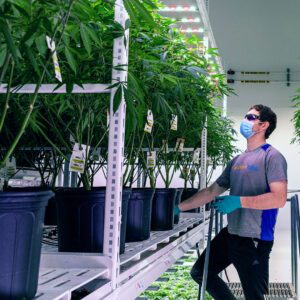
Set up a daily surface cleaning routine for this room, and keep your team members up-to-date on SOPs. This includes entry protocols (and possibly uniforms and footbaths).
On that topic: While we all enjoy giving tours to curious news media and to interested stakeholders, you should never tour visitors through a mother room. Allow only a limited number of staff into your mother room. Protect it at all costs!
Use only one pair of pruning shears per mother plant, and don’t cross-contaminate them. The risk of hop latent viroid (HpLVd) is ever-present in facilities, and a pathogen like that could decimate your mothers (and thus your bottom line). Regularly sterilize all pots, trays, and other equipment used in this room. Any equipment relating to the mother room should not be used anywhere else in your facility.
To ensure a sense of uniformity across your plants and across time, develop a pruning schedule to manage plant size and shape. Training team members in proper pruning techniques is crucial to ensure they promote healthy growth without stressing the plants.
That pruning plan leads us to…
[#4] Cloning Procedures and Record Keeping
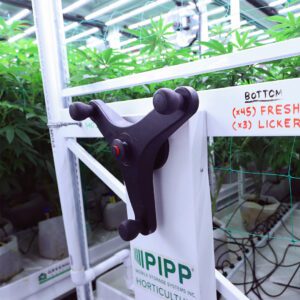
Follow a consistent cloning schedule, and make sure you’re building this schedule on sound reasoning (take your six-inch cuttings and rootings at the right time to maintain plant health). Document all records associated with each plant and its clones. Those records will inform later improvements in your mother room.
Observe the quality of those clones over time. How are they performing as they move through growth cycles? Those plants’ health will help you understand your mother plants’ health. Investigate and address right away any declines in cloning efficiency or quality.
PRO TIP: Implement regular data backup procedures to prevent loss of valuable genetic and cultivation records. Ensure that your digital tracking system has robust security measures in place to protect sensitive information and comply with regulatory requirements.
[#5] Regular Training and Education
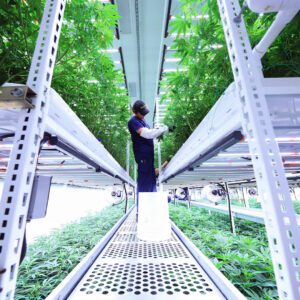
Even in cultivation team meetings that don’t specifically address the mother room on the agenda, try to connect what’s happening in the mother room to broader developments in the business. Make sure that all employees are aware of what genetics you’re maintaining.
Coordination with the flowering team and sales staff is crucial for managing a cannabis mother room; you don’t want to be cutting clones of a cultivar that is not selling, or for a cultivar that is piling up in your finished product storage room.
Mother rooms dictate the flow of product to the rest of your facility and ultimately to your sales channels.
The mother room team can greatly influence the culture of your business; and promote a culture of shared knowledge across the facility. Make sure that your mother room team is keeping other cultivation teams informed on any changes at the individual mother plant level.

